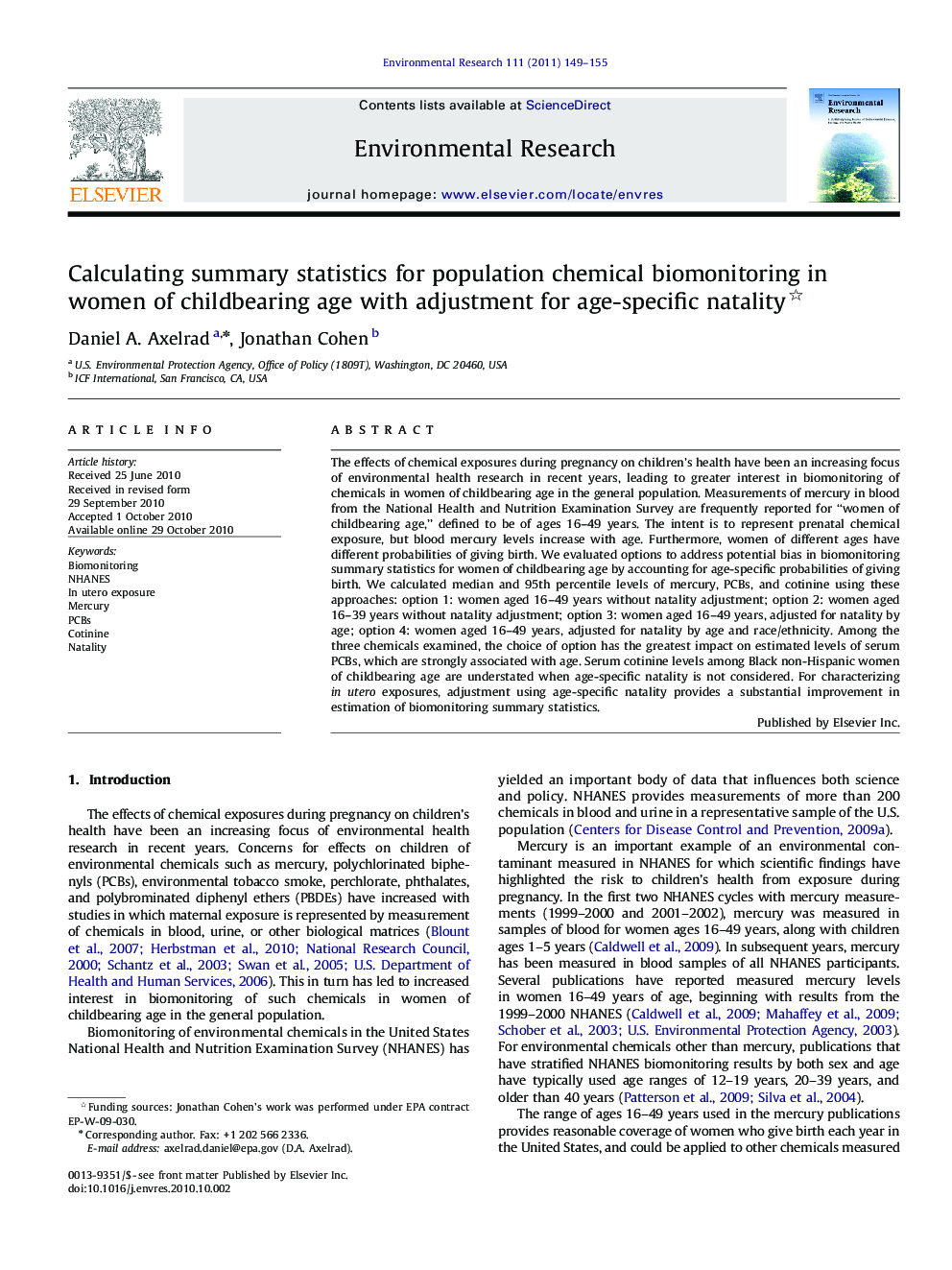| کد مقاله | کد نشریه | سال انتشار | مقاله انگلیسی | نسخه تمام متن |
|---|---|---|---|---|
| 4470021 | 1314383 | 2011 | 7 صفحه PDF | دانلود رایگان |

The effects of chemical exposures during pregnancy on children’s health have been an increasing focus of environmental health research in recent years, leading to greater interest in biomonitoring of chemicals in women of childbearing age in the general population. Measurements of mercury in blood from the National Health and Nutrition Examination Survey are frequently reported for “women of childbearing age,” defined to be of ages 16–49 years. The intent is to represent prenatal chemical exposure, but blood mercury levels increase with age. Furthermore, women of different ages have different probabilities of giving birth. We evaluated options to address potential bias in biomonitoring summary statistics for women of childbearing age by accounting for age-specific probabilities of giving birth. We calculated median and 95th percentile levels of mercury, PCBs, and cotinine using these approaches: option 1: women aged 16–49 years without natality adjustment; option 2: women aged 16–39 years without natality adjustment; option 3: women aged 16–49 years, adjusted for natality by age; option 4: women aged 16–49 years, adjusted for natality by age and race/ethnicity. Among the three chemicals examined, the choice of option has the greatest impact on estimated levels of serum PCBs, which are strongly associated with age. Serum cotinine levels among Black non-Hispanic women of childbearing age are understated when age-specific natality is not considered. For characterizing in utero exposures, adjustment using age-specific natality provides a substantial improvement in estimation of biomonitoring summary statistics.
Research Highlights
► Chemicals in blood of adult women can pose a risk to children’s health
► Population biomonitoring surveys show mercury and PCBs in blood increase with age
► Birthrates vary with age and race/ethnicity
► Unadjusted population survey data may provide biased estimates of in utero exposure
► Birthrate-weighted observations provide improved estimates of in utero exposure.
Journal: Environmental Research - Volume 111, Issue 1, January 2011, Pages 149–155